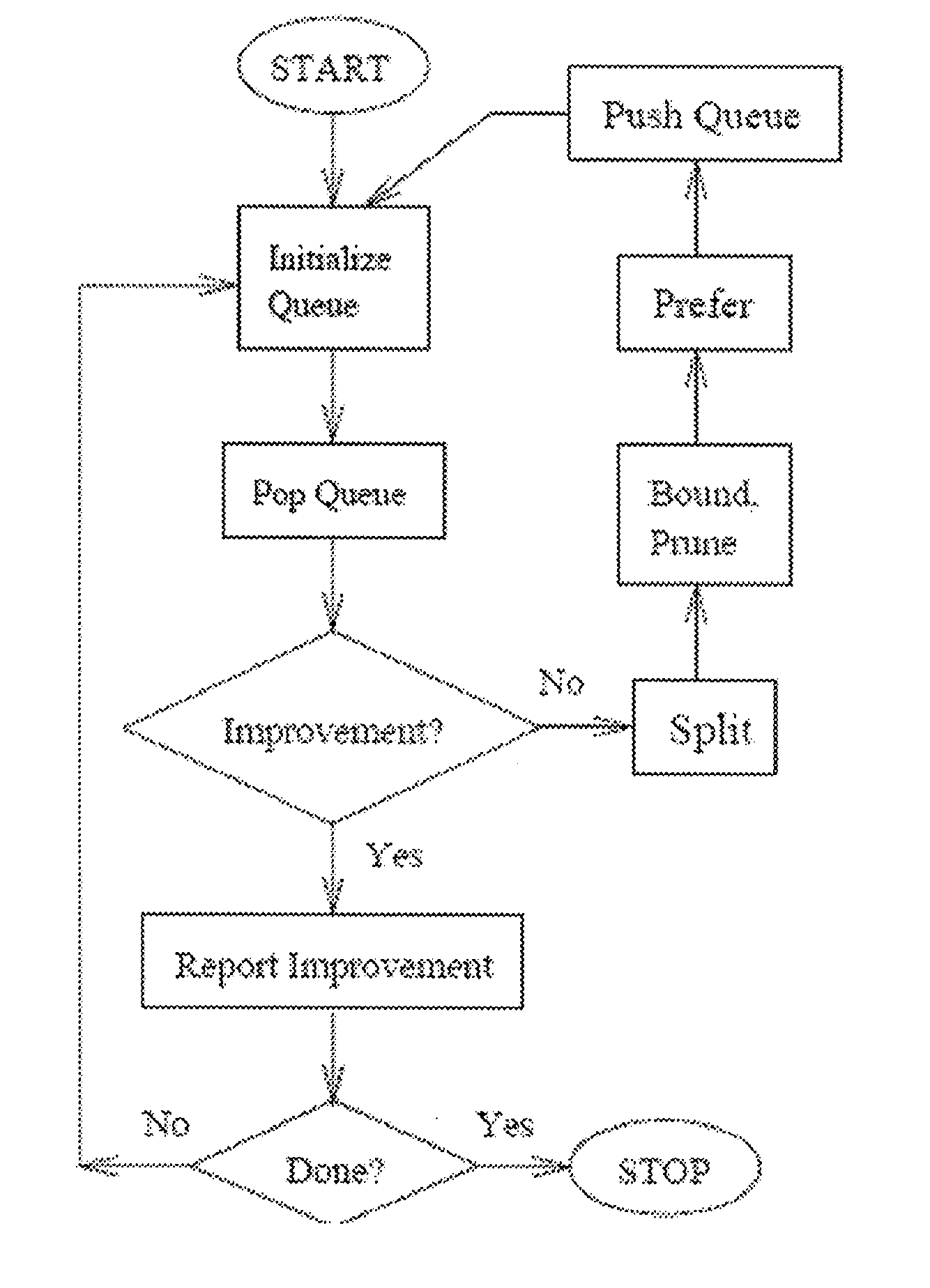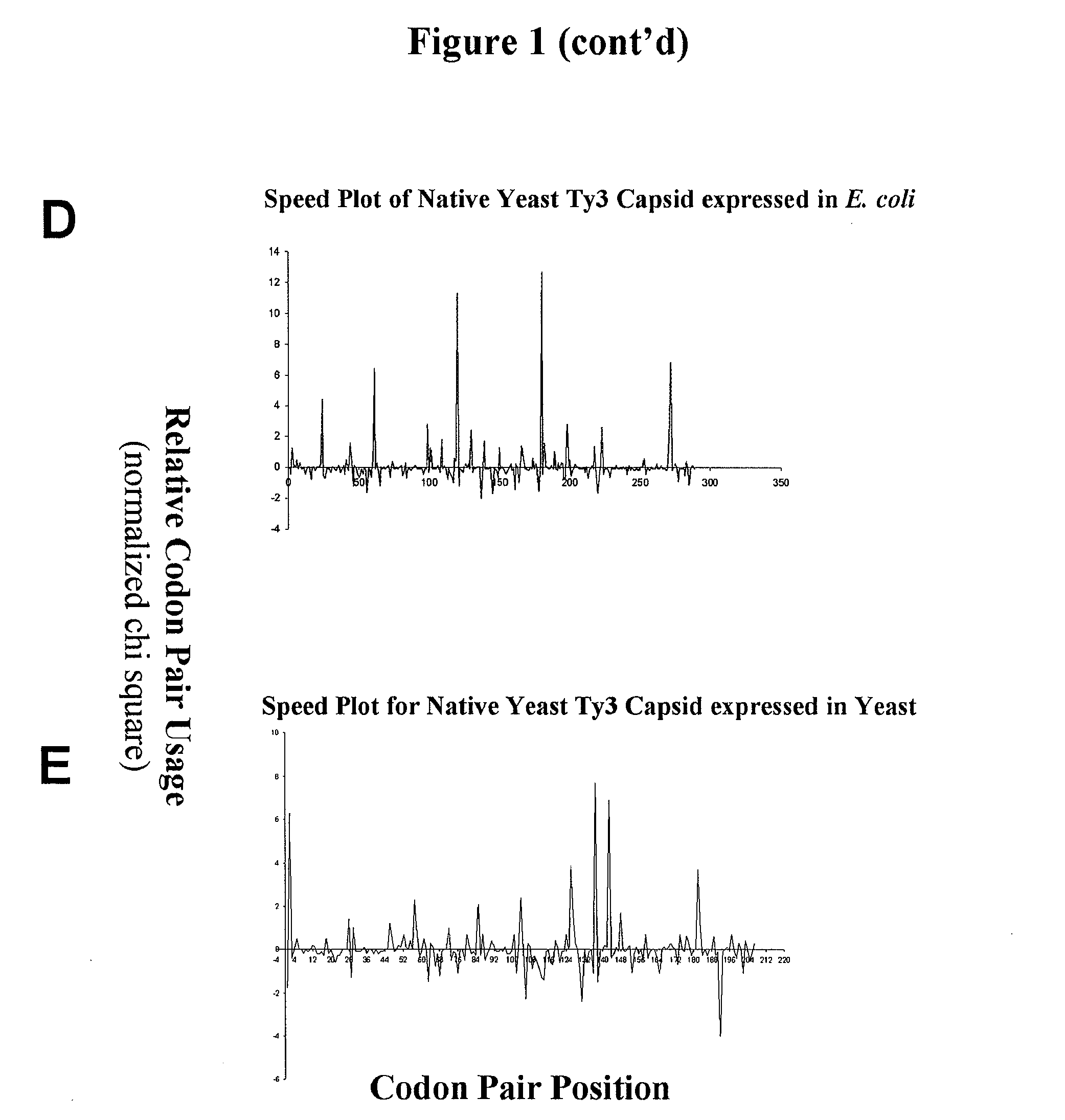Methods for calculating codon pair-based translational kinetics values, and methods for generating polypeptide-encoding nucleotide sequences from such values
a translational kinetics and codon technology, applied in the field of genetics, can solve the problems of inefficient translation, significant obstacles, synthetic genes, etc., and achieve the effect of facilitating analysis of translational kinetics
- Summary
- Abstract
- Description
- Claims
- Application Information
AI Technical Summary
Benefits of technology
Problems solved by technology
Method used
Image
Examples
example 1
[0214] This example describes graphical displays of z scores for expression of a gene from a yeast retrotransposon in yeast and bacteria, and E. coli expression levels of different nucleotide sequences encoding the same protein. Ty3 is a retrotransposon of Saccharomyces cerevisiae, and is adapted to express its genes in S. cerevisiae using S. cerevisiae translational machinery. Thus, expression of Ty3 genes in S. cerevisiae represents native expression of these genes.
[0215] Chi-squared values for S. cerevisiae and E. coli were determined using previously reported methods (Hatfield and Gutman, “Codon Pair Utilization Bias in Bacteria, Yeast, and Mammals” in Transfer RNA in Protein Synthesis, Hatfield, Lee and Pirtle Eds. CRC Press (Boca Raton, La.) 1993). Briefly, nonredundant protein coding regions for each organism was obtained from GenBank sequence database (75,403 codon pairs in 177 sequences for S. cerevisiae, and 75,096 codon pairs in 237 sequences for E. coli) to determine an...
example 2
[0222] This example describes the use of graphical displays of codon pair usage versus codon pair position in conjunction with knowledge of the secondary and tertiary structure of a polypeptide in evaluating over-represented codon pairs and the importance of pause sites between protein structural elements.
[0223] Normalized chi-squared values of codon pair utililization were plotted versus codon pair position for nucleic acid sequences encoding the capsid protein of the human immunodeficiency virus, HIV-1, and the capsid protein of the S. cereviseae retrotransposon, Ty3. The three-dimensional structure of the HIV-1 capsid protein has been determined experimentally, and the structural elements of the Ty3 capsid protein have been predicted by conventional threading methods to be similar to those of the HIV-1 capsid protein. The ribbon structure depicting alpha helices of each protein is shown above the respective graphical display. The regions of the abscissa indicating the amino term...
example 3
[0227] This example describes creation of generic translational kinetics values.
[0228] Generic species datasets can be generated by following the hierarchy of the phylogenetic tree of life. Starting at the root of the tree, each mid-level node of the phylogenetic tree, which could be a family, genus, or higher level, represents a collection of all the species in the sub-tree under this node, until the tree reaches the lowest level nodes, which correspond to individual species.
[0229] For example, in order to create a generic set of translational kinetics values, such as generic mammal, genomic sequences from various mammalian species such as human (Homo sapiens), monkey (Macaca mulatta, Macaca fascicularis), chimpanzee (Pan troglodytes), sheep (Ovis aries), dog (Canis familiaris), and cow (Bos Taurus) can be pooled. In another example, a generic rodent dataset can include genomic sequences from rat (Rattus novegicus), mouse (Mus musculus), and Chinese hamster (Cricetulus griseus). ...
PUM
| Property | Measurement | Unit |
|---|---|---|
| threshold level | aaaaa | aaaaa |
| threshold level | aaaaa | aaaaa |
| threshold | aaaaa | aaaaa |
Abstract
Description
Claims
Application Information
 Login to View More
Login to View More - R&D
- Intellectual Property
- Life Sciences
- Materials
- Tech Scout
- Unparalleled Data Quality
- Higher Quality Content
- 60% Fewer Hallucinations
Browse by: Latest US Patents, China's latest patents, Technical Efficacy Thesaurus, Application Domain, Technology Topic, Popular Technical Reports.
© 2025 PatSnap. All rights reserved.Legal|Privacy policy|Modern Slavery Act Transparency Statement|Sitemap|About US| Contact US: help@patsnap.com



